This article has been reviewed according to Science X's editorial process and policies. Editors have highlighted the following attributes while ensuring the content's credibility:
fact-checked
reputable news agency
proofread
Craft unfurls China's flag on the far side of the moon and lifts off with lunar rocks to bring home
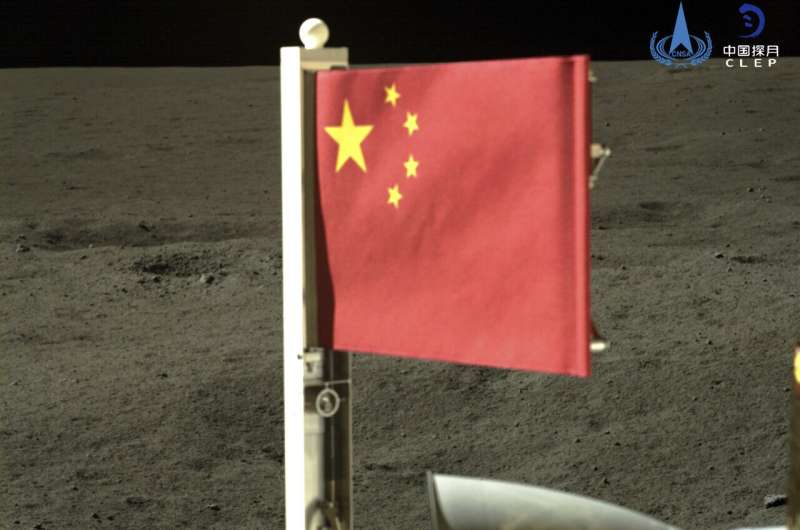
China said its lunar spacecraft unfurled the country's red and gold flag for the first time on the far side of the moon before part of the vehicle blasted off early Tuesday with rock and soil samples to bring back to Earth.
The mission was hailed as a success in China, which has made significant advances in a space program that aims to put a person on the moon before the end of this decade.
The Chang'e-6 probe was launched last month and its lander touched down on the far side of the moon Sunday. Its ascender lifted off Tuesday morning at 7:38 a.m. Beijing time, with its engine burning for about six minutes as it entered a preset orbit around the moon, the China National Space Administration said.
The agency said the spacecraft withstood a high temperature test on the lunar surface, and acquired the samples using both drilling and surface collection before stowing them in a container inside the ascender of the probe as planned.
The container will be transferred to a reentry capsule that is due to return to Earth in the deserts of China's Inner Mongolia region about June 25.
The small flag, which the agency said was made of special composite materials, emerged on a retractable arm deployed from the side of the lunar lander and was not placed onto the lunar soil, according to an animation of the mission released by the agency.
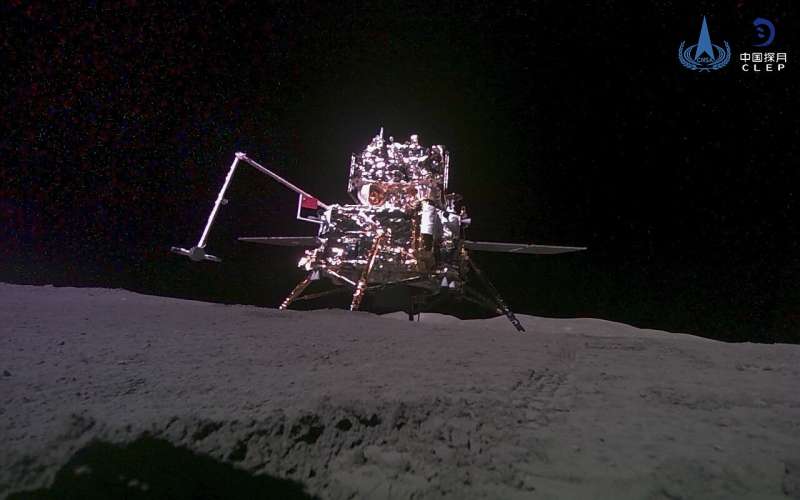
"Mission accomplished!" Foreign Ministry spokesperson Hua Chunying wrote on X. "An unprecedented feat in human lunar exploration history!"
Missions to the moon's far side are more difficult because it doesn't face the Earth, requiring a relay satellite to maintain communications. The terrain is also more rugged, with fewer flat areas to land.
Xinhua said the probe's landing site was the South Pole-Aitken Basin, an impact crater created more than 4 billion years ago that is 13 kilometers (8 miles) deep and has a diameter of 2,500 kilometers (1,500 miles).
It is the oldest and largest of such craters on the moon, so may provide the earliest information about it, Xinhua said, adding that the huge impact may have ejected materials from deep below the surface.
The mission is the sixth in the Chang'e moon exploration program, which is named after a Chinese moon goddess. It is the second designed to bring back samples, following the Chang'e 5, which did so from the near side in 2020.
-
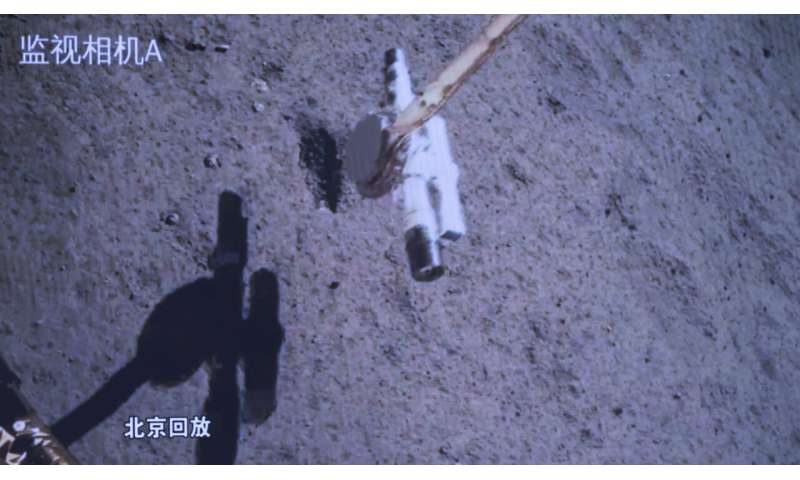
In this photo released by Xinhua News Agency, a replay screen shows Chang'e-6 probe collecting samples on the moon surface, at Beijing Aerospace Control Center (BACC) in Beijing, Tuesday, June 4, 2024. China says a spacecraft carrying rock and soil samples from the far side of the moon has lifted off from the lunar surface to start its journey back to Earth. Credit: Jin Liwang/Xinhua via AP -
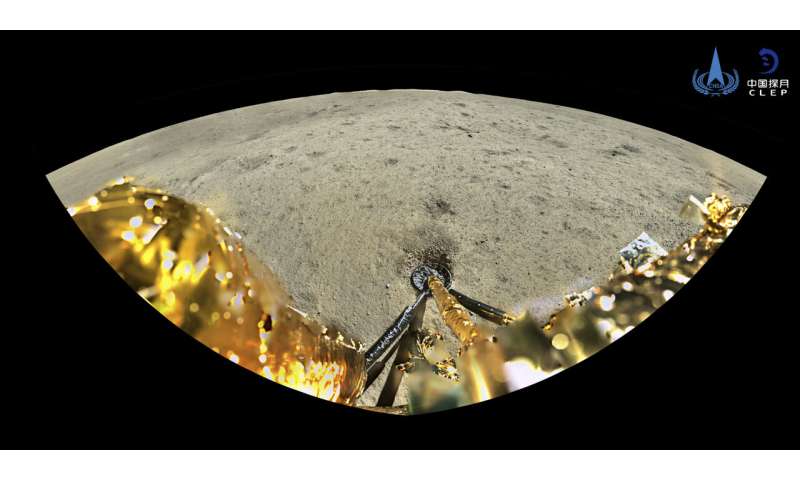
This China National Space Administration (CNSA) handout image released by Xinhua News Agency, shows a moon surface taken by a panoramic camera aboard the lander-ascender combination of Chang'e-6 spacecraft after it landed on the moon, Tuesday, June 4, 2024. China says a spacecraft carrying rock and soil samples from the far side of the moon has lifted off from the lunar surface to start its journey back to Earth. Credit: CNSA/Xinhua via AP -
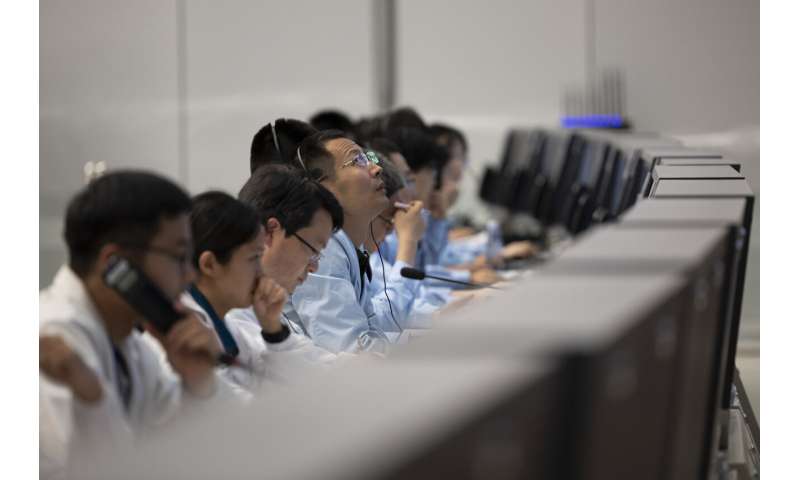
In this photo released by Xinhua News Agency, technical personnel work at the Beijing Aerospace Control Center (BACC) in Beijing, Sunday, June 2, 2024. A Chinese spacecraft landed on the far side of the moon Sunday to collect soil and rock samples that could provide insights into differences between the less-explored region and the better-known near side. Credit: Jin Liwang/Xinhua via AP
The moon program is part of a growing rivalry with the U.S.—still the leader in space exploration—and others, including Japan and India. China has put its own space station in orbit and regularly sends crews there.
China aims to put a person on the moon before 2030, which would make it the second nation after the United States to do so. America is planning to land astronauts on the moon again—for the first time in more than 50 years—though NASA pushed the target date back to 2026 earlier this year.
© 2024 The Associated Press. All rights reserved. This material may not be published, broadcast, rewritten or redistributed without permission.




















